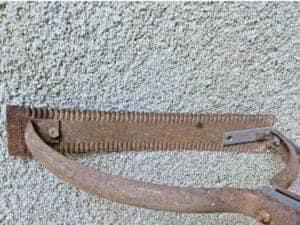In the modern age of advanced technology and sleek design, there’s something truly captivating about the old-style weed whacker. These humble machines, with their vintage charm and rugged functionality, harken back to a simpler time when yard work was a hands-on endeavor and the satisfaction of a well-manicured lawn was achieved through sheer dedication and hard work.
The old-style weed whacker, often referred to as a string trimmer or weed eater, is characterized by its distinctive design – a handheld device with a long shaft and a rotating head at the end. This head houses a spool of nylon string that rapidly rotates, cutting down grass and weeds with ease.
The simplicity of this design is a testament to its longevity; the basic mechanics have remained largely unchanged for decades.
These vintage weed whackers often feature a two-stroke engine that requires a mixture of gasoline and oil for fuel.
This engine emits a distinct, nostalgic sound that immediately transports enthusiasts to a bygone era. The tactile experience of pulling the starter cord and feeling the engine roar to life is a ritual that many remember fondly.
Using an old-style weed whacker is not just about functionality; it’s a way to connect with the past and pay homage to the generations before us who meticulously cared for their lawns using similar tools.
The act of cradling the whacker’s elongated shaft, feeling its weight, and controlling its movements requires a level of physical engagement that modern, automated tools can’t replicate.
Operating an old-style weed whacker requires a certain level of skill and finesse. Unlike their modern counterparts that might rely on automated systems to guide their movements, these vintage machines demand that the user’s hand-eye coordination be on point. The delicate dance between the operator and the tool is a rewarding experience, as a well-trimmed edge or a neatly cut path through tall grass becomes a testament to the operator’s skill.
While old-style weed whackers have an undeniable charm, they do come with their fair share of maintenance requirements. The two-stroke engines need regular care, including mixing the right fuel ratio and cleaning the air filters. The nylon string spools need frequent replacement, and the rotating head must be cleaned to prevent debris buildup. While these tasks might seem burdensome to some, they are also part of the unique experience of owning and operating a vintage weed whacker.

In a world where technology evolves at an astonishing pace, the enduring appeal of the old-style weed whacker remains a testament to the value of tradition, nostalgia, and hands-on craftsmanship. These vintage tools embody a sense of simplicity and authenticity that speaks to those who long for a connection to the past. As we look to the future of landscaping and yard maintenance.





